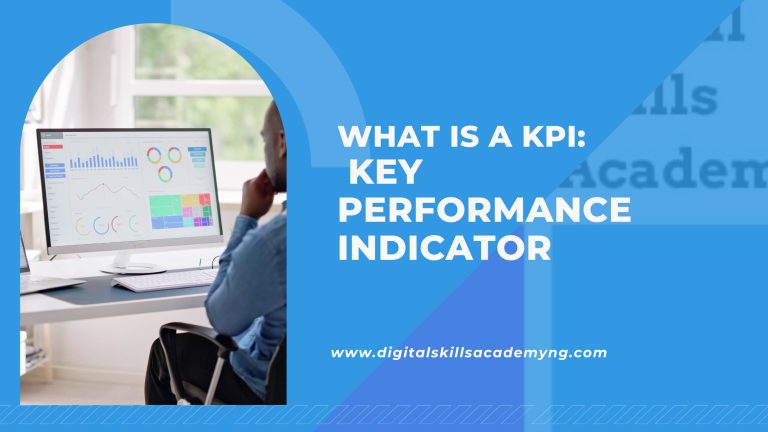What is CTR? (Click-Through Rate)
Understanding key performance metrics is critical to the success of any advertising campaign.
One of the most fundamental metrics used to measure the effectiveness of online ads, email marketing, and search engine optimization (SEO) is the Click-Through Rate (CTR).
CTR is a valuable indicator that helps marketers assess how well their ads or content resonates with their audience.
DIFFERENCE BETWEEN MARKETING AND ADVERTISING
Table of Contents
What is Click-Through Rate (CTR)?
Click-Through Rate (CTR) measures how often people who see your ad, email, or organic content click on it.
CTR is expressed as a percentage, providing insight into the effectiveness of a particular digital asset.
Whether you’re running a paid search ad, an email campaign, or simply publishing blog content, CTR tells you how enticing your offer or message is to your target audience.
For example;
If you’re running a Google Ads campaign, the CTR will show how many people clicked on your ad after seeing it.
The higher the CTR, the better your ad is at engaging users and encouraging them to take action.
How is Click-through rate (CTR) Used?
CTR is commonly used across multiple digital channels:
Search Engine Marketing (SEM)
In paid search advertising (Google Ads, Bing Ads) SEM, CTR measures the percentage of people who click on your ad after seeing it in search results.
Email Marketing
In email campaigns, CTR tells you how many recipients clicked on a link within your email compared to how many received or opened the email.
Display Ads
For banner ads or other visual media, CTR is crucial for measuring user interaction.
Organic Search Results (SEO)
CTR can be used to measure how effective your title tags and Meta descriptions are at drawing clicks in search results.
Importance of Click-Through Rate (CTR) in Advertising
CTR is an essential performance indicator because it provides direct insight into how well your ads or marketing efforts are capturing the attention of your audience.
Here are some reasons why CTR matters in advertising
- Measures Engagement
A high CTR suggests your ad or content is relevant and appealing to your audience. Conversely, a low CTR might indicate that your ad isn’t resonating with users or is poorly placed.
Understanding CTR helps advertisers tweak their messaging, targeting, or creative assets to improve engagement.
- Impacts Ad Quality Scores
In platforms like Google Ads, CTR plays a significant role in determining your Quality Score.
Google uses this score to rank ads and determine the cost-per-click (CPC).
A higher CTR generally means a higher Quality Score, which can lead to lower CPC and better ad positioning, maximizing the return on your ad spend.
- Helps Optimize ROI
A well-optimized CTR ensures you’re not just paying for impressions but also driving valuable traffic.
If your ad is generating clicks, it means you’re on the right track to achieving your business goals, whether lead generation, brand awareness, or sales.
By monitoring and improving CTR, you make sure your advertising dollars are spent efficiently.
- Indicates Relevance
CTR is one of the clearest indicators of how relevant your content is to the audience.
For example;
If you run a specific keyword-targeted ad campaign and the CTR is low, it may mean that your ad copy or targeting isn’t aligned with user intent.
On the other hand, a high CTR signifies that your ad closely matches what users are looking for.
- Affects Conversion Funnel Performance
CTR plays a crucial role in the upper stages of the conversion funnel.
While it doesn’t measure final sales or conversions, a poor CTR can block the opportunity for users to proceed further down the funnel.
Therefore, improving CTR increases the chances of reaching the ultimate goal of generating conversions.
How to Calculate CTR (Click-through Rate)
Calculating the click-through rate is simple and can be done with a straightforward formula:
CTR (%) = Number of clicks × 100
Number of Impressions
Where:
- Clicks represent the number of times users clicked on your ad or content.
- Impressions are the number of times your ad or content was displayed to users.
Example:
Let’s say you ran a display ad that received 5,000 impressions (the number of times the ad was shown) and 100 clicks.
The CTR would be calculated as:
𝐶𝑇𝑅 = (100/5000) × 100 = 2%
This means that 2% of the people who saw your ad clicked on it.
What is the Difference between Click-through Rate and Conversion Rate?
Many people confuse CTR with conversion rate, but the two metrics measure different aspects of a marketing campaign.
While both are critical to understanding the overall performance of your ads, they serve different purposes.
Click-Through Rate (CTR)
Focus: Measures the percentage of people who clicked on your ad compared to those who saw it (impressions).
Purpose: CTR gauges interest and engagement with your ad or content. It’s an indicator of how enticing your ad is to your audience.
Example: If 100 people clicked on your ad out of 5,000 impressions, your CTR is 2%.
Conversion Rate
Focus: Measures the percentage of people who completed a desired action (e.g., making a purchase, or signing up for a newsletter) after clicking on your ad.
Purpose: Conversion rate determines how effective your landing page or website is at turning clicks into valuable actions.
Example: If 10 out of the 100 people who clicked on your ad ended up making a purchase, your conversion rate is 10%.
Key Differences
CTR focuses on user interest and engagement with the ad, while conversion rate measures how well your website or landing page can close the deal.
If your ad is compelling, you can have a high CTR with a low conversion rate, but your landing page doesn’t fulfill user expectations.
Conversely, if the fewer clicks you get are highly qualified leads, you could have a lower CTR but a higher conversion rate.
How Do CTR and Conversion Rate Work Together?
While CTR measures the effectiveness of your ads in generating clicks, conversion rate measures the success of your landing page or website in converting those clicks into meaningful actions.
Both metrics are essential to optimizing the full customer journey: from capturing interest to driving action.
Conclusion
Click-through rate (CTR) is a fundamental metric in digital marketing, offering vital insights into how well your ads, emails, or content engage your audience.
A strong CTR indicates that your message resonates with your audience and drives them to take the desired action, whether that’s visiting your website, signing up for a newsletter, or making a purchase.
While CTR helps you understand the initial interaction between users and your ad, it’s important not to overlook other key metrics like conversion rate, which measures the effectiveness of your landing page or site in completing the user journey.
CTR is crucial for measuring the initial engagement of your digital campaigns.
A high CTR improves ad performance, better ROI, and more conversions.
Understanding the relationship between CTR and conversion rate is essential for long-term marketing success.
Our certified Digital marketing course will teach you how to perform analysis and provide online marketing strategies, develop a customer retention plan, and research all the key marketing channels to leverage them to engage your customers and grow your business. What are you waiting for?




